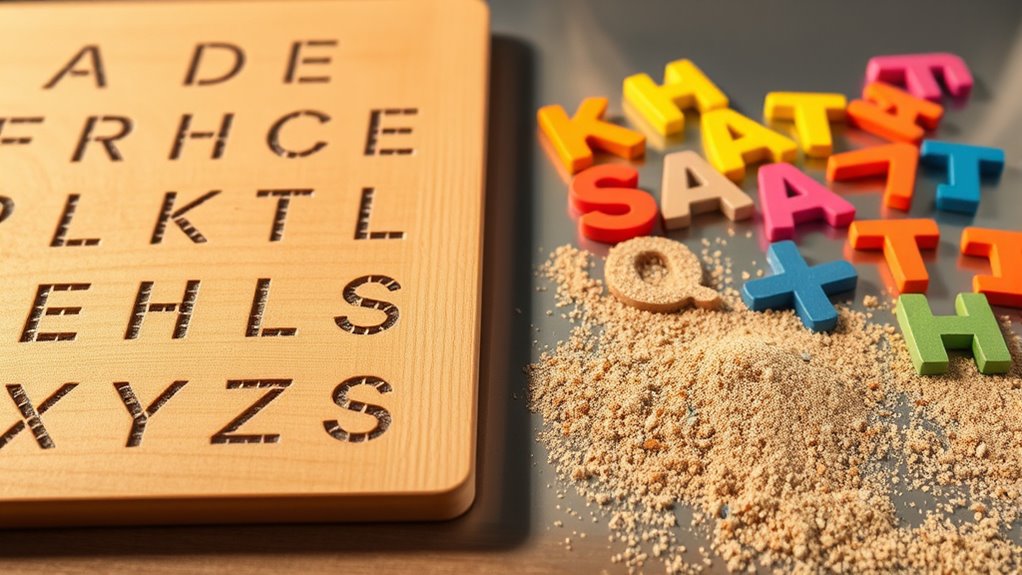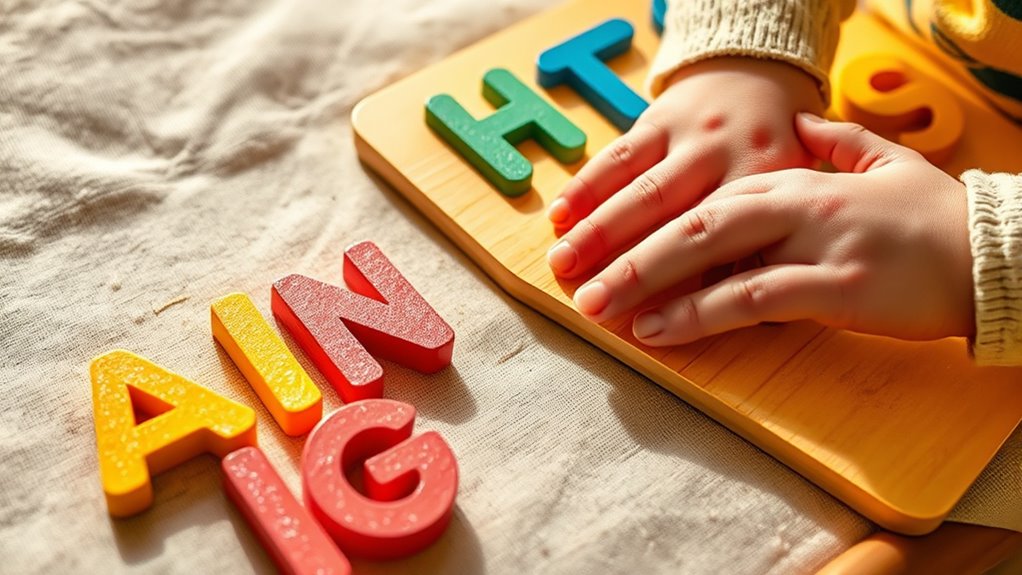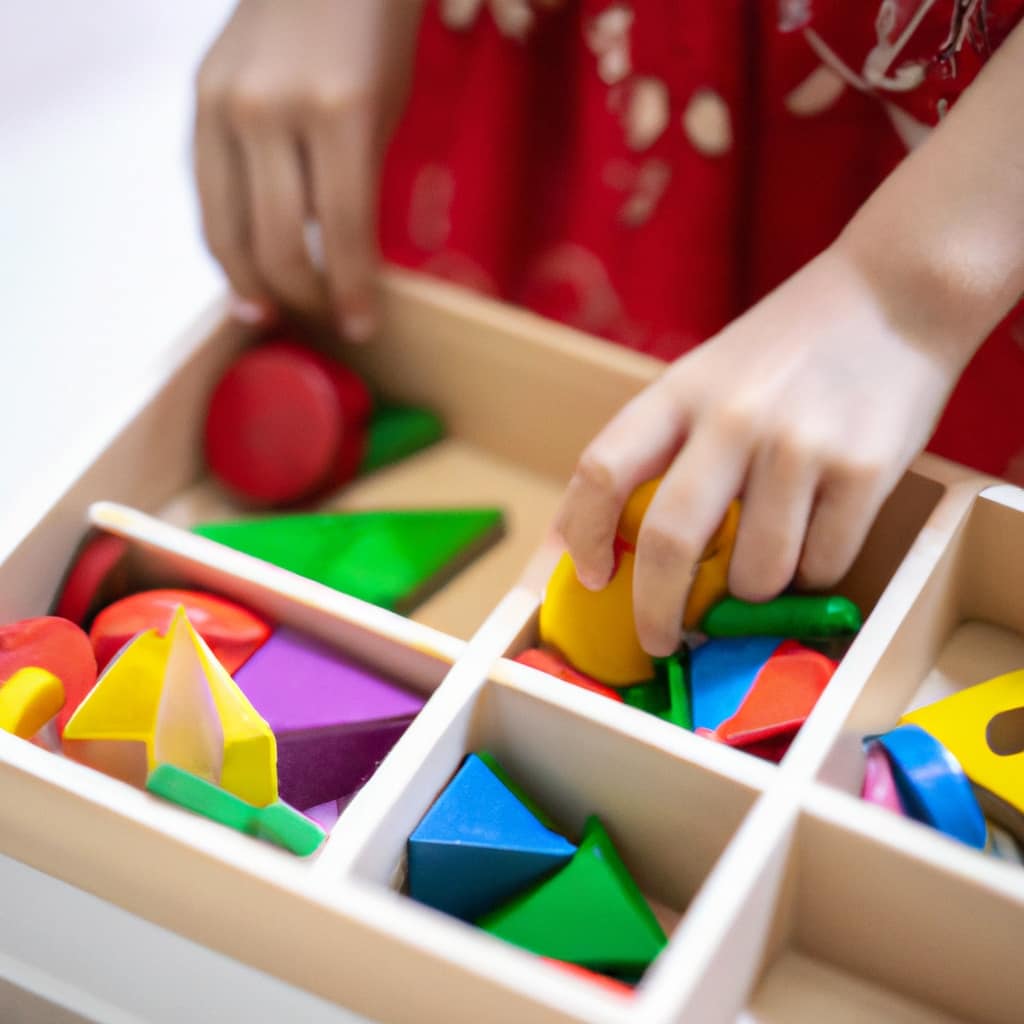Start with sandpaper letters first because they offer simple tactile feedback and help children build confidence in letter recognition. Once they’re comfortable exploring tactile shapes, introduce tracing boards to develop fine motor skills and more structured letter formation. This sequence supports multisensory learning and steady skill development. If you keep exploring, you’ll discover how to coordinate these tools effectively for a solid early literacy foundation.
Key Takeaways
- Introduce sandpaper letters first to provide tactile exploration and build confidence in letter recognition.
- Transition to tracing boards once children are comfortable with tactile feedback and ready for guided fine motor practice.
- Use sandpaper letters during informal, sensory-rich activities like sensory bins or circle time.
- Employ tracing boards in structured settings to develop precise letter formation and fine motor skills.
- Progressively integrating both tools supports comprehensive early literacy and handwriting development.

When teaching young children to recognize and write letters, educators often choose between tracing boards and sandpaper letters, each offering unique benefits. Both tools support multisensory learning, which engages multiple senses to help children internalize letter shapes more effectively. Tracing boards typically have grooves or raised outlines that allow children to trace with their fingers or a writing utensil, fostering tactile and kinesthetic learning. This hands-on approach enhances fine motor development because children practice precise finger movements, strengthening the muscles needed for writing. As they trace, they become more aware of the letter’s structure, which builds a solid foundation for later handwriting skills. Incorporating sensory-rich experiences with tactile tools like sandpaper letters can make the learning process more engaging and effective. Sandpaper letters, on the other hand, provide a textured surface that children can feel as they trace over the rough material. This tactile feedback reinforces letter recognition by engaging the sense of touch directly with the shape of the letter. When you introduce sandpaper letters, you help children connect the physical sensation with the visual form, promoting multisensory learning that taps into different brain pathways. This method is especially effective for young learners who benefit from sensory-rich experiences, as it makes the process of learning letters more engaging and memorable. Timing is essential when deciding which tool to introduce first. Typically, you might start with sandpaper letters because they are simple, portable, and versatile. They can be used in various settings — at circle time, during one-on-one sessions, or even in sensory bins. The textured surface offers immediate tactile feedback, which can boost confidence and curiosity in early learners. Once children are comfortable with feeling and tracing the letters, you can transition to tracing boards. These often offer more structured guidance, helping children develop their fine motor skills further as they practice controlled movements and letter formation. Tracing boards also often come with additional features like guides or patterns that help children internalize correct letter shapes and strokes. Introducing sandpaper letters first, followed by tracing boards, ensures a gradual progression that builds multisensory learning and fine motor control. As children become more confident, you can encourage them to write the letters independently, reinforcing their understanding through practice. Both tools play a crucial role in early literacy development, and understanding when to use each can help you create a balanced, effective approach that nurtures children’s sensory, motor, and cognitive skills seamlessly.
Frequently Asked Questions
How Do I Determine a Child’s Readiness for Each Method?
You can determine a child’s readiness by observing their fine motor skills and ability to recognize letters. If they show steady control with small movements and can identify letters confidently, they’re ready for tracing boards. If their fine motor skills are still developing, start with sandpaper letters to build tactile letter recognition while gradually improving their fine motor control. Watching their engagement and progress helps you decide the best approach.
Are There Age Guidelines for Introducing Tracing Boards or Sandpaper Letters?
Think of it like tuning a vintage radio—you need the right moment to get clear sound. For introducing tracing boards and sandpaper letters, there’s no strict age, but focus on the child’s fine motor and sensory development. Generally, children around age 3 or 4 are ready, as they gain better control and sensory awareness. Watch for their ability to handle materials and coordinate movements before making the introduction.
Can Using Both Methods Simultaneously Benefit Learning?
Using both methods simultaneously can benefit learning by enhancing multisensory integration, which supports cognitive development. When you combine tracing boards and sandpaper letters, you engage visual, tactile, and kinesthetic senses, making the learning experience more immersive. This approach helps reinforce letter recognition and motor skills, encouraging deeper understanding. You’ll likely see improved retention and confidence as your child explores letters through multiple senses, fostering a strong foundation for reading and writing.
What Are the Common Challenges With Each Approach?
Like steering through a maze, you might face sensorimotor challenges with tracing boards, as some students struggle with pencil control, leading to engagement difficulties. Sandpaper letters can be slippery and hard to feel, causing frustration. These issues can hinder learning, making it tough for students to stay motivated. Recognizing these common challenges helps you adapt your approach, ensuring each child builds confidence and skills smoothly.
How Do I Transition From Tactile to Traditional Writing Exercises?
To shift from tactile to traditional writing exercises, you should focus on supporting sensory integration and motor development. Gradually introduce pencil grip exercises and fine motor activities to strengthen hand muscles. Encourage practice with guided writing, emphasizing proper posture and control. As confidence builds, reduce tactile aids, allowing your learner to focus on pencil skills. This approach guarantees a smooth shift, fostering both sensory and motor progress for effective handwriting development.
Conclusion
Ultimately, choosing between tracing boards and sandpaper letters is like selecting the right path for a young traveler. Both guide you gently, each offering unique advantages. Trust your intuition and observe your child’s response—sometimes, the subtle differences whisper the best choice. Remember, the journey of learning is a delicate dance; patience and kindness lead the way. With time, you’ll find the gentle rhythm that nurtures confidence and love for the written word.











